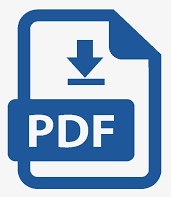Análisis de indicadores relacionados con el estrés académico en estudiantes universitarios
Palabras clave:
estrés académico, indicadores fisiológicos, indicadores psicofisiológicos, indicadores psicológicosResumen
Introducción: a pesar del empleo de indicadores fisiológicos, psicofisiológicos y psicológicos asociados al estrés académico, la comunidad científica no ha logrado definir con total claridad qué comportamiento debe seguir.
Objetivo: analizar el comportamiento de indicadores relacionados con el estrés académico en estudiantes universitarios.
Materiales y métodos: están referidos a la aplicación de un procedimiento que consta de tres etapas: preparatoria, experimental y resultados. Se evaluaron los indicadores variabilidad de la frecuencia cardiaca, umbral de discriminación táctil, percepción de profundidad, tiempo de reacción simple y Prueba de Yoshitake. Como herramienta para el procesamiento de la información se utilizó el software Statgraphic Centurion 15.0.
Resultados: existen diferencias significativas entre el antes y el después para la muestra examinada, además de diferencias entre las variaciones obtenidas de los indicadores entre los grupos. Se detectaron discrepancias entre los resultados obtenidos en el indicador tiempo de reacción simple, en presencia de estrés académico, y los obtenidos por otros investigadores.
Conclusiones: fue demostrada la presencia de diferencias significativas en el comportamiento de los indicadores seleccionados ante la presencia de estrés académico en estudiantes universitarios, al menos bajo condiciones experimentales.
Descargas
Citas
2. García Dihigo J. Nuevo modelo de evaluación e intervención ergonómica [tesis doctoral]. Matanzas: Universidad de Matanzas; 2017.
3. Ribeiro RP, Palucci Marziale MH, Martins JT, et al. Estresse ocupacional entre trabalhadores de saúde de um hospital universitário. Rev Gaúcha Enferm [Internet]. 2018 [citado 15/02/2022];39. Disponible en: https://www.scielo.br/j/rgenf/a/93bFnj3GkbyPtrpjyGvn8cj/abstract/?lang=pt
4. Medeiros Costa ME, Maciel RH, Rêgo DPd, et al. Occupational Burnout Syndrome in the nursing context: an integrative literature review. Rev Esc Enferm USP [Internet]. 2017 [citado 15/02/2022];51. Disponible en: https://www.scielo.br/j/reeusp/a/cbwmDRp8pjxLh5RCCDFjQRC/abstract/?lang=en
5. Pérez-Fuentes MC, Molero-Jurado MM, Gázquez-Linares JJ, et al. Analysis of Burnout predictors in nursing: risk and protective psychological factors. The European Journal of Psychology Applied to Legal Context [Internet]. 2019 [citado 15/02/2022];11(1):33-40. Disponible en: https://journals.copmadrid.org/ejpalc/art/ejpalc2018a13
6. Pinto Cornejo SF. Carga laboral en las enfermeras del servicio de Oncología del Hospital Goyeneche, Arequipa [tesis doctoral]. Arequipa (Perú): Universidad Nacional de San Agustín; 2017.
7. Díaz Piñera WJ, García Mesa L, Linares Fernández TM, et al. Causas más frecuentes de invalidez total en Cuba. 2008-2012. Rev Cubana Salud Trabajo [Internet]. 2020 [citado 15/02/2022];18(2):39-47. Disponible en: https://revsaludtrabajo.sld.cu/index.php/revsyt/article/view/60
8. Arce Varela E, Azofeifa-Mora C, Morera-Castro M, et al. Asociación entre estrés académico, composición corporal, actividad física y habilidad emocional en mujeres universitarias. MHSalud [Internet]. 2020 [citado 15/02/2022];17(2):72-97. Disponible en: https://www.scielo.sa.cr/scielo.php?script=sci_arttext&pid=S1659-097X2020000200072
9. Díaz Cárdenas S, Martínez Redondo M, Zapata Teherán AM. Rendimiento académico y calidad de vida relacionada con la salud en estudiantes de odontología. Salud Uninorte [Internet]. 2017 [citado 10/03/2022];33(2):139-51. Disponible en: http://www.scielo.org.co/scielo.php?script=sci_arttext&pid=S0120-55522017000200139
10. Halgravez Perea LA, Salinas Téllez JE, Martínez González GI, et al. Percepción de estrés en universitarios, su impacto en el desempeño académico, afrontamiento y apoyo familiar. Rev Mex Estomatol [Internet]. 2017 [citado 10/03/2022];3(2):27-36. Disponible en: https://www.remexesto.com/index.php/remexesto/article/view/70
11. Liébana Presa C, Fernández Martínez ME, Vázquez Casares AM, et al. Burnout y engagement en estudiantes universitarios de enfermería. Enferm Glob [Internet]. 2018 [citado 10/03/2022];17(50):131-52. Disponible en: https://scielo.isciii.es/scielo.php?pid=S1695-61412018000200131&script=sci_arttext&tlng=pt
12. Oro P, Esquerda M, Viñas J, et al. Síntomas psicopatológicos, estrés y burnout en estudiantes de medicina. Educación Médica [Internet]. 2019 [citado 10/03/2022];20(4):42-8. Disponible en: https://www.sciencedirect.com/science/article/pii/S1575181317301717
13. Toribio Ferrer C, Franco Bárcenas S. Estrés académico: el enemigo silencioso del estudiante. Revista Salud y Administración [Internet]. 2016 [citado 10/03/2022];3(7):11-8. Disponible en: https://revista.unsis.edu.mx/index.php/saludyadmon/article/view/49
14. Parra Sandoval JM, Rodríguez Álvarez D, Rodríguez Hopp MP, et al. Relación entre estrés estudiantil y reprobación. Revista Salud Uninorte [Internet]. 2018 [citado 21/04/2022];34(1):47-57. Disponible en: http://www.scielo.org.co/scielo.php?script=sci_arttext&pid=S0120-55522018000100047
15. Almirall Hernández P. Efectos negativos del esfuerzo mental: aspectos teóricos y metodológicos; un método para su evaluación [tesis]. Sao Paulo: BIREME; 1986. Citado en LILACS; ID: lil 80813.
16. Basantes Vaca V. Contribución a la valoración del trabajo mental a partir de la integración de variables biomoleculares [tesis doctoral]. Matanzas: Universidad de Matanzas; 2017.
17. Almirall P, Santander J, Vergara A. La variabilidad de la frecuencia cardiaca como indicador del nivel de activación ante el esfuerzo mental. Rev Cubana Hig Epidemiol [Internet]. 1995 [citado 21/04/2022];33(1):3-4. Disponible en: http://scielo.sld.cu/scielo.php?script=sci_arttext&pid=S1561-30031995000100002
18. Pérez Lazo de la Vega M, Almirall Hernández PJ, Pérez Barreda A, et al. Procedimiento para evaluar el efecto del esfuerzo mental sobre la salud cardiovascular utilizando la VFC como indicador de la activación central. Rev Cubana Salud Trabajo [Internet]. 2014 [citado 21/04/2022];15(2):57-72. Disponible en: https://www.medigraphic.com/cgi-bin/new/resumen.cgi?IDARTICULO=53957
19. Kalsbeek JW. Do you belive in sinus arrhytmia? Ergonomics. 1973 Jan;16(1):99-104. Citado en PubMed; PMID: 4702068.
20. Hyndman BW, Gregory JR. Spectral analysis of sinus arrhytmia during mental loading. Ergonomics [Internet]. 1975 [citado 21/04/2022];18(3):255-70. Disponible en: https://www.tandfonline.com/doi/abs/10.1080/00140137508931460
21. Viera Barceló M. Diseño de un experimento cognitivo de corta duración para la selección de indicadores de carga mental [tesis]. Matanzas: Universidad de Matanzas; 2014.
Publicado
Cómo citar
Número
Sección
Licencia
La misma permite:
• Copiar y redistribuir el material publicado en cualquier medio o formato.
• Adaptar el contenido.
Esto se realizará bajo los siguientes términos:
• Atribuir los créditos de los autores e indicar si se realizaron cambios, en cuyo caso debe ser de forma razonable.
• Uso no comercial.
• Reconocer la revista donde se publica.
Se mantienen los derechos de autoría de cada artículo, sin restricciones.






